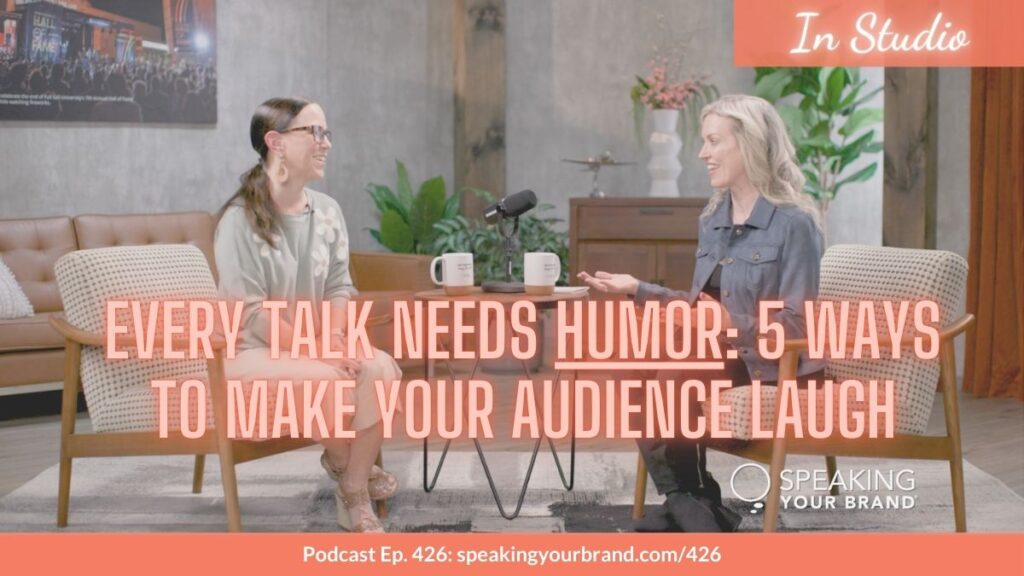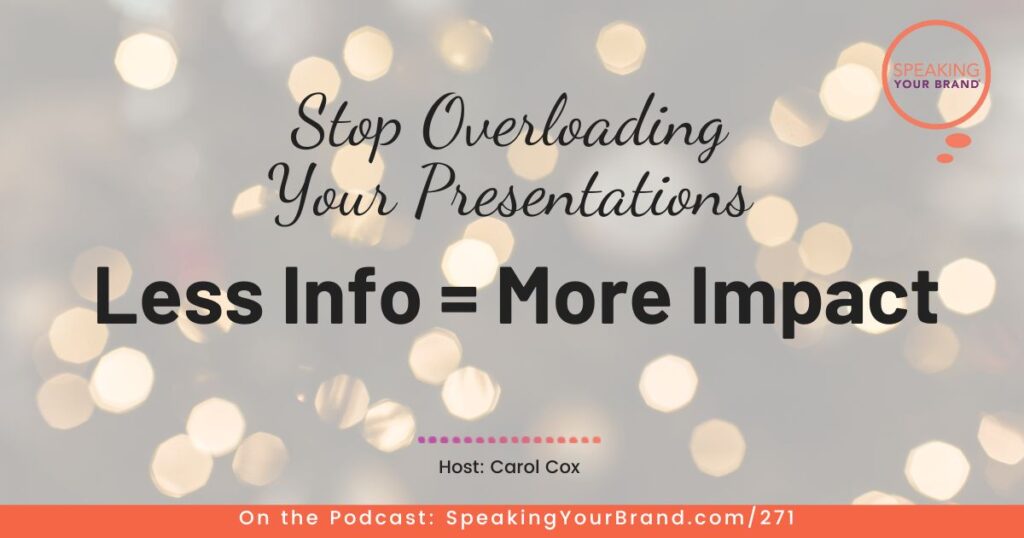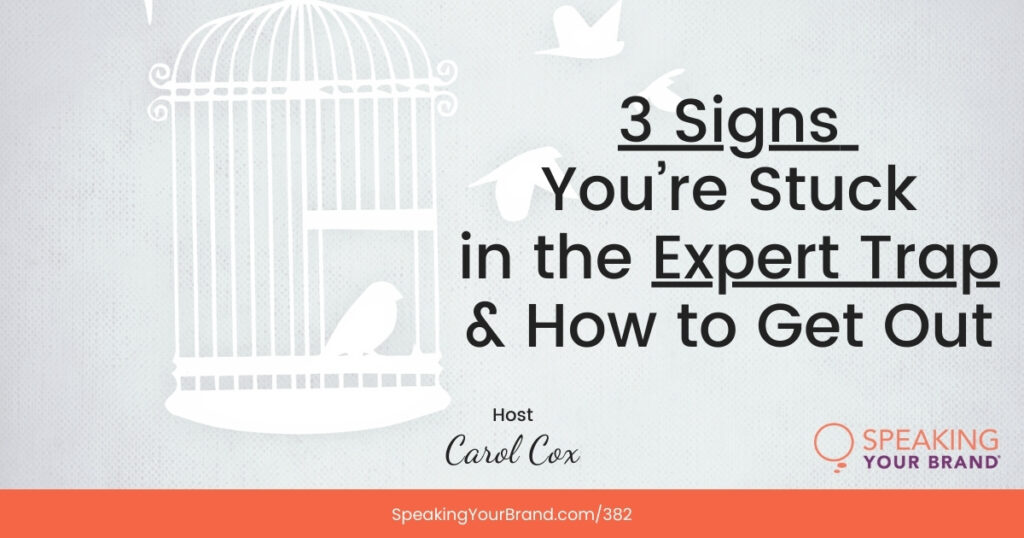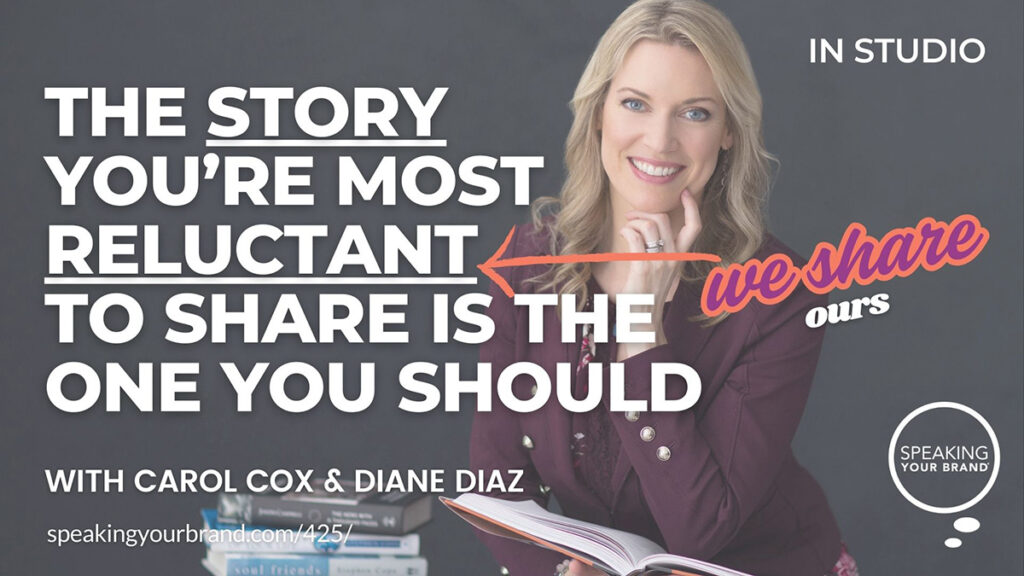SYB-426-Humor.mp3: this mp3 audio file was automatically transcribed by Sonix with the best speech-to-text algorithms. This transcript may contain errors.
Carol Cox:
That’s a good thing to think about when we want to add humor to talks. Now, I know that people watching this are thinking, well, but I’m just talking about my business topic or whatever. Like, why do I need humor? I just want to convey this information. And so why is humor important for us to include, whether it’s a keynote, a Ted talk, a business presentation, a conference session that we’re doing. Hi, and welcome to Speaking Your Brand. I’m your host, Carol Cox, joined by our lead speaking coach, Diane Diaz. Hi, Diane.
Diane Diaz:
Hi, Carol.
Carol Cox:
We always recommend that you add humor to any presentation, keynote or talk that you give. Now, you may think when you hear a humor that you have to do a corny joke. Maybe like this one.
Diane Diaz:
Did you know that koalas actually aren’t bears? They don’t have the qualifications.
Carol Cox:
Okay, so that’s where that’s where the laugh track would come in on a.
Carol Cox:
Sitcom, because clearly that’s a super corny joke. Now, you could tell that in your talk if you wanted to, it could find a place in there. But you don’t have to find a knock knock joke or a corny joke or a comedy stand up set to include in your talks to add humor to it now. Diane, I know that you’ve actually done a stand up comedy set, a five minute set. Can you give an example of one of the vignettes that you shared?
Diane Diaz:
Yes. So my mother was very frugal, as am I, but she grew up during the depression, so she was extremely frugal. And one of the things that she liked to do was to clip coupons, right? So that was one way of saving money. But that isn’t the only way that she saved money at the grocery store. She also, back in the day when I was a kid, there was in the grocery store. We shopped and there was a big table that was divided into sections that had like wrapped candy in it, like caramels and things. And this is pre technology. So you would take a little bag and put five pieces of candy, and you would put your little quarter in the slot of the box. So my mom would tell my sister and I, who were five and seven at the time, go and get the candy. But first she would give us some instructions and she would say, now listen, I don’t want you to take five pieces of candy. I want you to take six. And we were like, mom, but isn’t that stealing? Just go get the candy. This was my mom’s way of saving money. Now you can understand it from her point of view. Like this really, legitimately happened. She’s saving money because we didn’t have much money. Technically it’s stealing, but I find that hilarious that she’s basically turning her children into petty thieves.
Carol Cox:
Well, and also, the way that you tell it makes it funny because you could see telling it to like, well, we would go to the grocery store. My mom would say, take six pieces of candy instead of five, right? And you’re like, okay, well, really, where’s the humor in it? Right? Like, you do the dialogue, you do your mom’s voice and how she’s saying it and how you’re reacting as a little kid. Yes. So thinking about adding humor to talks is like, find the the humor in the situation, but then kind of play it out, like how to bring it to life.
Diane Diaz:
Yes. And even act it out. So when I, when I was doing the comedy set, telling that story, I would be my mom and then I would bend down like I’m talking to two small children, right. So giving us the instructions and then I would lean back up because now I’m, I’m me saying, but mom, isn’t that stealing? Then I’d bend back down. So you’re acting it out to create the whole scene for the audience? Okay, girls, this is what I want you to do. I want you to go get that candy. But I don’t want you to take five pieces. I want you to take six. But, mom, isn’t that stealing? Shh. Just go get the candy.
Carol Cox:
Well, that’s a great transition to another form of humor that you can include in a talk, which is more physical comedy. So I actually like physical comedy, which I’m surprised to discover about myself. But from doing the in-person workshops and retreats that we’ve done where we really we get the women who attend, we do improv exercises, we do dance parties. We really get them comfortable in their bodies and doing things and kind of expanding where they’re at by the time they get on the stage to practice their talks or their stories, they feel much more expansive. And so I like physical comedy, and I think it’s because of watching sitcoms growing up, because you would have to. The actors did kind of have to act things out. And I was recently watching an old episode from friends, which of course was like, is on all the time, so you can always catch an episode. And I was it was an early one, and I had forgotten how physically comedic those actors are. Like Jennifer Aniston, there was like a scene and she’s like, grabbing her mouth because, like, she hit her tooth and she’s like, really getting into it. And there’s other TV shows which are much more like cerebral. Or maybe they’re just not that much into physical comedy.
Speaker5:
Oh, Emily. Emily. Okay, so that’s me as a cheerleader. I’m. Fine. I’m fine. I just listen to tooth. It’s no big deal. I have a dentist. You know, I’m gonna go put some ice on it. Excuse me.
Diane Diaz:
Yeah. That’s a great example. Another example is stand up comedians. If you go most not all comedians, but most comedians, or at least the ones I like, like Iliza Shlesinger and comedians like that. They are very physical. So they don’t just tell jokes, they actually act out what they’re doing.
Speaker6:
And I can say this as a woman who chose to be single for a very long time, as a feminist, as a champion of women, I genuinely feel that when women ask me, how did.
Speaker7:
You guys meet?
Speaker6:
It’s less about a genuine personal inquiry for me, and it’s more like they’re digging for clues, like.
Speaker7:
Where did you find a suitor? Tell us. We wish to know.
Diane Diaz:
And so if they make up a character, or even if Mike Birbiglia is another one, if they’re telling a story about their child and something that a conversation they had with them, they’re acting it out to the point of actually laying on the ground, which just adds to the humor level.
Speaker8:
I write some jokes for you. I write some for my daughter. Where you need to know for the story is that it killed, you know, like it was like, ah.
Speaker9:
What’ll we have for dinner?
Carol Cox:
So we have finding the humor in situations, stories, little vignettes. We have physical comedy. There’s also maybe what, like sardonic or maybe a little bit more sarcastic or intellectual humor.
Diane Diaz:
Yeah, I love sarcasm. Yeah, that’s like my second language.
Carol Cox:
And I know that you’re a big fan of Seinfeld. Oh, you love watching that. So how what kind of humor do they have? And how do you see that show up?
Diane Diaz:
Yeah, it’s the type of humor that I like to call. Well, it’s situational humor, but I think it’s also what I would consider, like stupid humor, where it’s it’s really nothing. But they make such a big deal out of the nothing that it makes it hilarious. I mean, completely absurd every day, you know, the characters going through their everyday absurd situations that they turn into this big, huge deal, but they really carry the joke really far. So they don’t just it’s not a joke, joke, joke, joke, joke. It’s a joke that goes throughout the entire show. So they take that situation and they really, like go deep with it and that makes it absurdly hysterical.
Speaker10:
I didn’t get any bread.
Speaker11:
Just forget it. Let it go.
Speaker10:
Excuse me. I think you forgot my bread.
Speaker12:
Bread. $2 extra.
Speaker10:
$2. But everyone in front of me got free bread.
Speaker12:
You want bread?
Speaker10:
Yes, please.
Speaker12:
$3. What? No soup for you?
Carol Cox:
It’s almost like they like, blow it out of proportion.
Diane Diaz:
Absolutely.
Carol Cox:
They make it much bigger than whatever the actual situation would be. Yes, yes, yes. Okay, so that’s a good thing to think about when we want to add humor to talks. Now, I know that people watching this are thinking, well, but I’m just talking about like my business topic or whatever, like, why do I need humor? I just want to convey this information. And so why is humor important for us to include, whether it’s a keynote, a Ted talk, a business presentation, a conference session that we’re doing?
Diane Diaz:
Yeah, I think humor does a couple of things. Number one, I think it sort of lightens the mood. So we’ve had clients who are talking about, yeah, they might be talking about something in their business, but maybe they’re sharing a story that’s particularly poignant or or moving. And I think adding a humorous element, not necessarily to that story, but somewhere in the talk kind of lightens the mood and breaks the tension. Right? I think it also lets the audience know it’s a safe space because we all relate to humor. If you can get people to laugh, they’re releasing all this energy. Everybody feels connected. They feel tied together that we all laughed at the same thing. Ha ha. Right. So it’s it’s unifying. It is a release. It is energetic, right? It creates an energy in the audience. So it has so many purposes.
Carol Cox:
Yeah, I love that. And I love this idea of like breaking the tension. It’s almost like what we describe when we’re working with our clients at the in person workshops. Like you almost need to have energetic highs and lows, even in a kind of more heartfelt or kind of more difficult story. You still have to have an energetic high point, because your audience doesn’t want to stay flat and monotone like you as the person delivering it, but they emotionally don’t want to stay flat and neutral throughout the entire thing. So humor allows you some of those energetic high points.
Diane Diaz:
Absolutely. Yeah. And it gives it sort of takes the audience on a ride. Right. So where it’s it’s and they kind of don’t know what to expect. And then when you’re able to pepper some humor in there, it’s those little unexpected nuggets.
Carol Cox:
So I know that sometimes we’re like, oh, okay, I’m just going to just wing it and something funny comes out or something funny comes out and and that will be fine. So yes, that could happen. Like you could just end up saying something funny in your talk without having it planned out. I like actually planning the humor, which is kind of funny because in that other episode, we talked about you being the procrastinator, and I very much not being the procrastinator, but I will plan out the humor, and one of the ways that I’ll do that is I’ll look through my whole slide deck once I have it done, or a client’s slide deck, and I look and it’s like, okay, like we have no humor in here whatsoever unless it happens to just impromptu happen. We need to go make sure we find some spots. So I’ll find their stories, like, okay, where is either a humorous element to the story or right after the story. How can we lighten the mood? So to add an aspect to the story, or I’ll find a funny GIF or a funny video clip to kind of highlight. Maybe it’s like, you know, to the audience like, hey, I know you really want to achieve X, y, Z, and kind of some type of funny gif that represents that. So that’s also a really great way to think about intentional humor.
Diane Diaz:
Yeah. And I think GIFs and memes are great for clients who like, we hear a lot of times, well, I’m just not funny. Well that’s okay. You can still incorporate humor. You don’t have to be a comedian, right? You don’t have to tell jokes to make it funny, but you can incorporate funny memes or funny cartoon that sort of gets your point across, makes the audience laugh, and they identify with it. And you still achieve the same goal. But it doesn’t have to come from you personally.
Carol Cox:
Let’s talk about self-deprecating humor, because that’s another form of humor. A lot of stand up comedians use that as well. I know as women, we have to be a little bit careful with self-deprecating humor because it can. It can hurt us more than it helps us, depending on what it is. And I remember years ago I got the advice from someone who does comedy, and she said to me, she’s like, self-deprecating humor is good because it builds trust between you and the audience, and it kind of you let down your guard. You show that you’re not perfect. The audience will then relate to you. But, she said, you have to be careful not to use self-deprecating humor that harms your credibility for what it is that you’re there talking about. So, for example, if I’m there talking about what we do here at Speaking Your brand, I could do a funny bit about maybe that I’m not a great gardener, which I’m not like. I have a black thumb. I cannot keep anything alive. Like, I could talk about that and that would be funny, but I wouldn’t necessarily want to talk about something related to the core message that I’m talking about.
Diane Diaz:
Yes. Yeah. I think, like you said, self-deprecating humor done carefully can be effective. I do like, again, when someone takes that self-deprecating element and then will thread it through the talk, right? So that it comes, it sort of comes back. And they keep not constantly, but like a few times they’ll reflect back like to it. And then it sort of creates that sort of content continuity throughout the talk and still self-deprecating, but in a safe sort of way. Like, I could joke about being short because, I mean, I am short. It’s obvious you can see that, right? So I often use that as a tool because it is funny to say, like, I don’t know if you’ve noticed, but I’m short, right? Like, because duh, but but things like that that are safe, safe.
Carol Cox:
And it doesn’t harm your credibility by saying that. Right. Because clearly it’s not related to the work that you do. Okay. So we talked about so different types of humor that we can use in our talks. So we have situational humor. So find the humor in a story that you’re sharing. We have physical humor. So physical comedy, when you’re acting out stories or things on the stage, we have maybe like more sardonic, sarcastic, intellectual humor. We have just like funny maybe. Maybe you do like knock knock jokes and corny jokes and you want to throw a few of those in. Or like funny gifs and memes and then self-deprecating humor. Yes. So for those of you who have been listening to this and watching this, think about these different types of humor that we just talked about, and how can you incorporate some of these into every single talk, every single presentation that you give, because your audience is really going to appreciate having that connection not only with you, but also with everyone else who’s in the audience. I wish I had another corny joke that we could end this with I can’t have any other no.
Diane Diaz:
I cannot think of. I’m fresh out. Now that you’ve put me on the spot, I can’t think of one.
Carol Cox:
Why did the chicken cross the road? To get to the other side. That’s the only one I know. Until next time. Thanks for watching.
Sonix has many features that you’d love including transcribe multiple languages, automated subtitles, generate automated summaries powered by AI, secure transcription and file storage, and easily transcribe your Zoom meetings. Try Sonix for free today.







